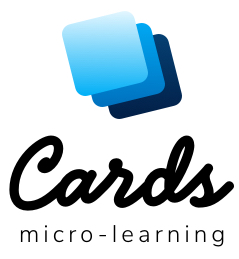The Power Of Microlearning Authoring Tools
Microlearning authoring tools are specialized software solutions that allow users to create, distribute, and track short, focused learning modules. These tools are designed with simplicity and accessibility in mind, making it possible for anyone within an organization to develop and share knowledge quickly and efficiently.
Understanding Microlearning Authoring Tools
Imagine preparing a gourmet meal versus a quick, nutritious smoothie. Both can be nourishing, but a smoothie is far easier to make and consume on the go. Microlearning authoring tools are the smoothie makers of the learning world—providing essential knowledge in a convenient, accessible format.
Key Features Of Microlearning Authoring Tools
To appreciate the full potential of microlearning authoring tools, it’s crucial to understand their key features:
1. Ease Of Use
These tools typically offer user-friendly interfaces that require minimal technical skills, enabling employees at all levels to create content effortlessly.
2. Engagement
By incorporating multimedia elements such as videos, quizzes, and interactive scenarios, microlearning modules keep learners engaged and motivated.
3. Flexibility
Microlearning content can be accessed on various devices, allowing learners to engage with the material at their convenience, whether they’re at their desks or on the move.
4. Tracking And Analytics
These tools often come with robust tracking and analytics capabilities, providing insights into learner progress and content effectiveness.
Microlearning Authoring Tools Vs. Traditional Authoring Tools
When comparing microlearning authoring tools to traditional eLearning authoring tools, several distinctions become apparent. Traditional authoring tools are akin to crafting a full-length movie. They are powerful and feature-rich, allowing for the creation of comprehensive training programs. However, they often require a significant investment of time, resources, and technical expertise.
In contrast, microlearning authoring tools are more like producing a series of short, high-quality video clips. These tools are designed for speed and efficiency. They empower users to create impactful learning experiences without the need for extensive technical knowledge or long development cycles.
The Daily Life Analogy: Microlearning As Daily Vitamins
To put it into perspective, think of traditional eLearning courses as a complete diet plan designed by a nutritionist. It’s detailed, thorough, and requires commitment. On the other hand, microlearning modules are like daily vitamins. They provide essential nutrients that keep you healthy and energized, without the need for an elaborate meal preparation process.
Just as taking daily vitamins can prevent health issues and boost overall well-being, incorporating microlearning into your organization’s training regimen can enhance employee performance and knowledge retention. It’s about making learning an integral, seamless part of everyday work life.
Benefits Of Microlearning Authoring Tools
The benefits of adopting microlearning authoring tools are manifold:
- Improved retention
Bite-sized content is easier to absorb and remember, leading to better knowledge retention and application. - Increased engagement
Short, focused modules are less likely to overwhelm learners, keeping them engaged and motivated. - Cost-effectiveness
These tools reduce the time and resources required to create training materials, offering a cost-effective solution for organizations of all sizes. - Adaptability
Microlearning content can be quickly updated or modified, ensuring that training materials remain relevant and up-to-date.
A Comparative Look: Microlearning Vs. Other Training Modalities
While microlearning has its distinct advantages, it’s essential to recognize the value of other training modalities as well. Instructor-Led Training (ILT), for instance, provides a level of interaction and personalized feedback that microlearning cannot replicate. Similarly, blended learning—combining online and face-to-face instruction—offers a comprehensive approach that leverages the strengths of both methods.
The flexibility of microlearning authoring tools enables them to integrate seamlessly with traditional training methods. For instance, microlearning modules can serve as pretraining resources for ILT sessions, offering foundational knowledge that enhances the impact of face-to-face instruction. Additionally, these modules can act as follow-up reinforcement, helping to ensure that key concepts are remembered and applied consistently.
Choosing The Right Microlearning Authoring Tool
Selecting the appropriate microlearning authoring tool for your organization requires careful consideration of several factors:
1. User Experience
Opt for tools that offer intuitive interfaces and easy navigation to ensure that employees can create and access content without technical difficulties.
2. Content Capabilities
Ensure the tool supports various content types, including videos, quizzes, and interactive elements, to keep learners engaged.
3. Integration
Look for tools that integrate seamlessly with your existing Learning Management System (LMS) and other platforms to streamline content distribution and tracking.
4. Analytics
Prioritize tools that offer comprehensive analytics to track learner progress and measure content effectiveness.
Conclusion
Microlearning authoring tools are revolutionizing the way organizations approach training and knowledge sharing. By providing quick, accessible, and engaging learning experiences, these tools are helping companies combat “infobesity” and enhance employee performance. Just as daily vitamins support overall health, microlearning modules ensure that learning becomes a natural and integral part of the workday. As a microlearning activist, I advocate for the adoption of these tools to create a more agile, knowledgeable, and empowered workforce.
By leveraging the power of microlearning authoring tools, organizations can not only meet the demands of today’s fast-paced business environment but also pave the way for a more efficient and effective learning culture. It’s time to embrace the future of learning—one bite-sized module at a time.

